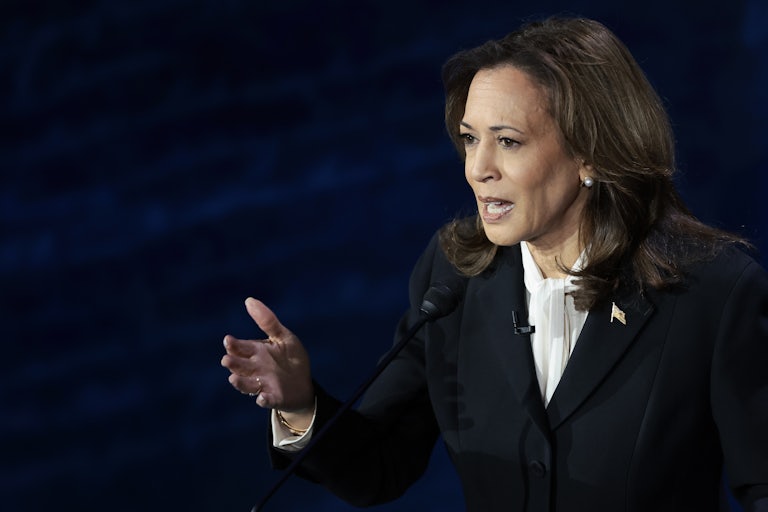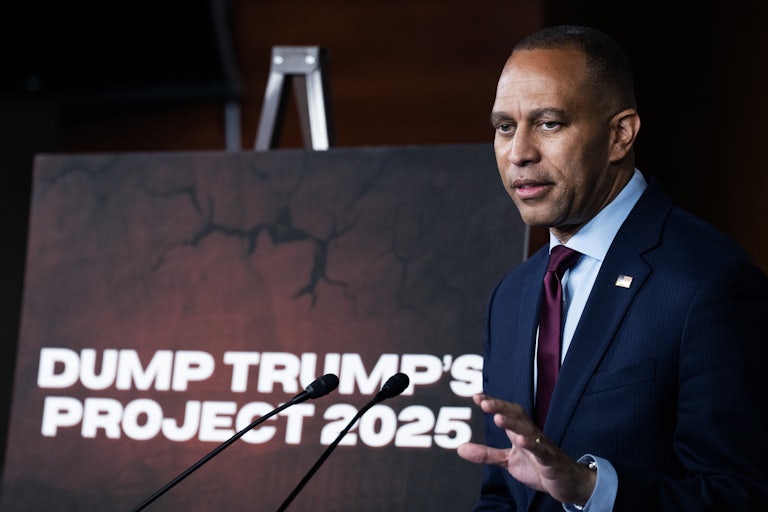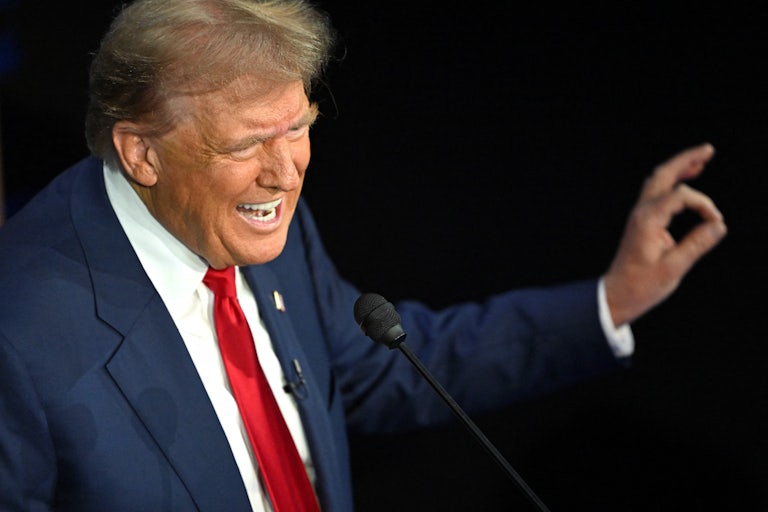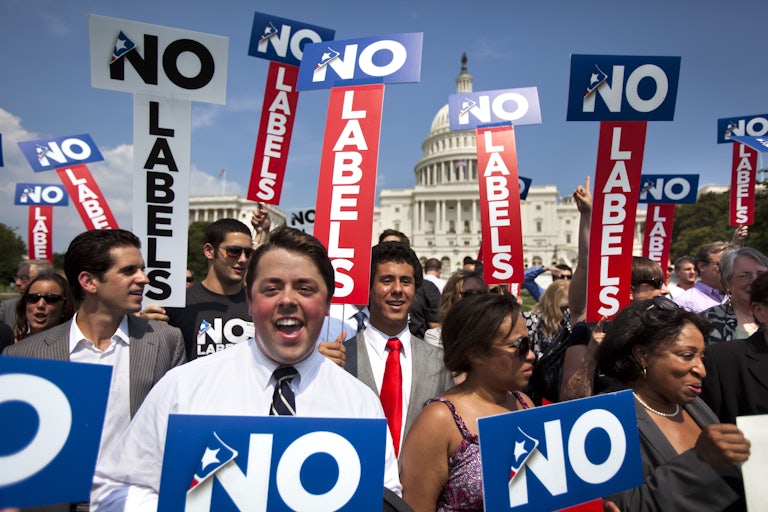How Harris Got Democracy Back on the Ballot
The vice president has shrewdly started using Trump’s own words against him, raising the salience of his authoritarian streak and righting her media strategy ship along the way.
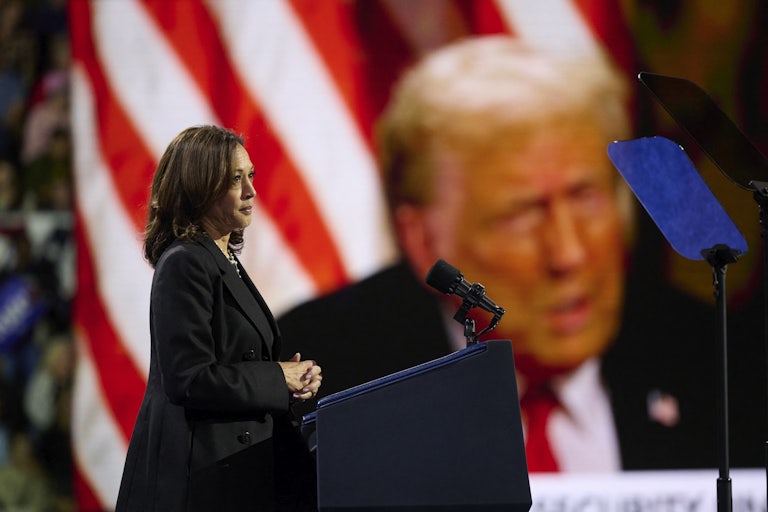
Last week, on these pages, I went into some detail about big issues that Vice President Kamala Harris needed to incorporate into her closing argument, lest she miss opportunities to draw important attention to—and contrasts with—what a second Trump term would mean for America. Since then, I’ve realized I missed an opportunity of my own. As a rather relentless assault of political news reminded me, beyond his bad policies and ideas, Trump is a uniquely dangerous threat to our democracy. It’s not a matter that should go unmentioned for too long.
Fortunately, Kamala Harris doesn’t seem to need urging from me to take up this matter. In her most recent work on the stump, she’s gone to great lengths to raise the salience of the danger that Trump poses. What’s more, she’s making her case in a way that gets media attention and appeals to wide swaths of the electorate—and she’s making her democracy case at a moment when the public seems ready to hear it. The approach she’s taking is some of her best strategic output since her debate.
Trump’s been giving her a lot of material to work with lately. His most recent stump speeches have been nearly undiluted herrenvolk pornography, flamboyant arias against migrants and other “enemies within,” coupled with some of the most despotic ideas he’s ever mused about, including invoking the Alien Enemies Act of 1798 to dispose of his political enemies. (His former secretary of defense has urged people to take Trump seriously in this regard.) These recent appearances have been so disturbing that his Monday rally in which he slipped into a fugue and swayed to music for a half an hour seemed to be a nice break from relentless invocations to political violence and oblique threats to political rivals.
Far from letting Trump slide, Harris has been making Trump’s recent rants the centerpiece of her campaign appearances. On Wednesday, Harris appeared at a rally in Bucks County, Pennsylvania, with former GOP Representatives Adam Kinzinger and Barbara Comstock and a slew of other Never Trump Republicans, and made a speech about protecting our constitutional values. She wove in recent news—Trump’s aforementioned plans to punish his political enemies; General Mark Milley’s warning that the former president was “fascist to the core”—in an effort to make these stakes clear: “He considers any American who doesn’t support him or bend to his will to be an enemy to our country.… He says that as commander in chief he would use our military to go after them. Honestly, let that sink in: Trump is increasingly unstable and unhinged.”
As NPR noted, this turn from Harris is part of a larger effort to “appeal to moderate Republicans and independent voters,” which may cause some consternation to those who’d prefer she center her rhetorical efforts toward left-liberal audiences. But Harris’s overtures to center-right fence-sitters aren’t the bipartisan triangulations of yesteryear. Harris isn’t Biden, making impossible promises to lead GOP electeds back off the QAnon cliff, and she’s certainly not following Barack Obama into the Grand Bargain weeds.
Harris needs moderate suburbanites to climb on board with her. The Democrats have a rough Senate map, so Harris has to run in a way that might help save Montana Senator Jon Tester’s job. But this outreach is all about democracy as well: Some of the Republicans Harris might reach are conservative election officials who haven’t drunk the Trump Kool-Aid, for whom a little bit of assurance might help them steel themselves against the pressure to commit ballot jankery. At any rate, if the terms of our détente with moderate Republicans is that we all agree a dangerous caudillo shouldn’t be president, these are perhaps the most favorable-to-the-left negotiations in recent memory. At any rate, I’d rather spend the next four years having policy arguments with a too-centrist Kamala Harris than being rooted out as an “enemy of the people.”
Harris doesn’t just save this rhetoric for the Never Trump set, however. This is but a part of a recent push to make these arguments in front of rallygoers of all stripes, often by doing little more than standing out of the way and letting Trump speak for himself. As NPR reported on a rally in Erie, Pennsylvania, Harris showed attendees a 30-second mastercut of Trump’s recent public derangements—a montage that “showed Trump repeatedly complaining about ‘the enemy from within’ suggesting they should be jailed—or dealt with violently.”
By showing rallygoers videos of Trump’s demented ravings, Harris is buying herself more coverage of Trump at his worst. The key difference here is that rather than just sit back and hope that the political press might decide to cover Trump as a dangerous, blathering loon, she’s giving them what they really want: a big ol’ partisan slapfest to cover.
Stunting on Trump in this fashion meets a media that’s eternally horned up for conflict and controversy where they live, increasing the odds that the wild, authoritarian fantasia Trump’s been spinning on the stump gets more daily coverage. It’s also something of a twofer, because in addition to all the vile racism and violent musings, you’re also wrapping in Trump’s visible infirmities in forming complete sentences and following a conversation.
It also advantages Harris if Trump takes more questions about the crazy things he says. The fallout from Trump’s invocation of using the law to pursue and punish “enemies within” has been considerably worse for Trump now that Harris is drawing attention to it. In the first place, when Trump’s been pressured to be more specific about who he means by “enemies within,” he’s included well-known Democratic politicians like Adam Schiff and Nancy Pelosi, which probably sounds great if you attended a Nazi boat parade for Trump in recent days; less so if you’re a moderate voter with normie tastes.
It’s also clear that this coverage is annoying Trump as well: At Wednesday’s Fox town hall event (in which Trump was peppered with questions from an audience of what seemed to be Republican organizers cosplaying as undecided voters), Trump was asked about his recent “enemy from within” remarks, and he offered a petulant response. “You know what they are,” he groused about the Democrats complaining about his rhetoric. “They’re a party of sound bites.” The man truly does not like having his own words read back to him. But it’s an easy way to bait him—and as Harris demonstrated during the debate, baiting Trump is a time-tested way to throw him off his game.
The shift Harris is making here is a laudable break with a bad dynamic that Democrats get into with the media. Far too often, Democrats expect the media to take the lead on pointing out that Trump is a psychopath, in order to demonstrate the fourth estate’s commitment to democracy. The media, meanwhile, expects Democrats to take the lead on policing Trump’s lies because, to their mind, it’s the best way to demonstrate their mettle as politicians. It’s arguable that this arrangement consigns all parties to the job for which they’re least well-suited. More to the point, Democrats will probably witness the heat death of the universe before the mass media develops the sort of patriotic impulses that would lead it to save democracy of its own volition.
It’s better to make good use of the small-minded, shiny object–obsessed political press that we have and feed them the birdseed they want—chaos, controversy, and cheap conflict—than pretend that this industry is going to have some kind of nick-of-time civic awakening. The only way the media will cover Trump as an enemy to democracy is for Harris and her fellow Democrats to make a daily habit of serving up broadsides on the topic. If Democrats have figured this out, it’s a consequential step that could decide the election in their favor.
This article first appeared in Power Mad, a weekly TNR newsletter authored by deputy editor Jason Linkins. Sign up here.
